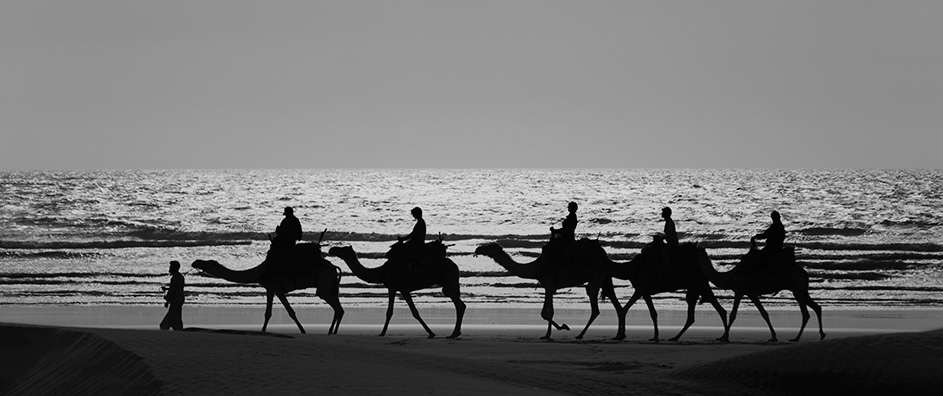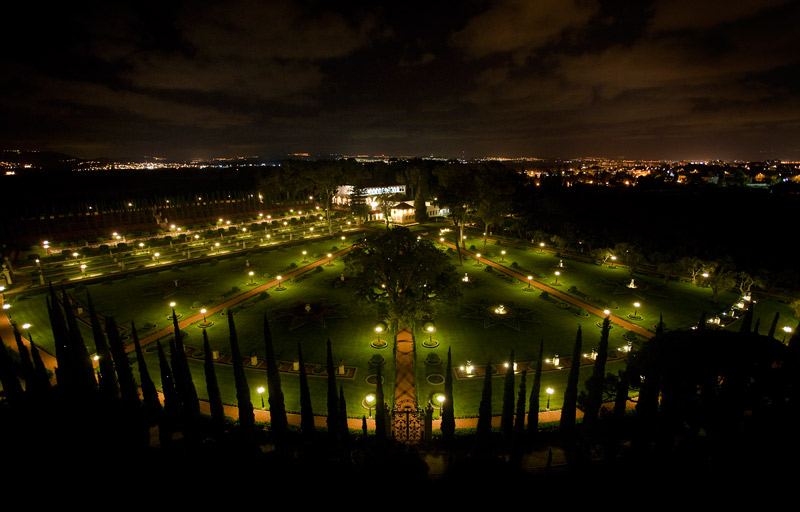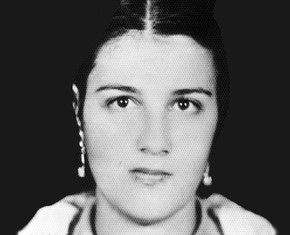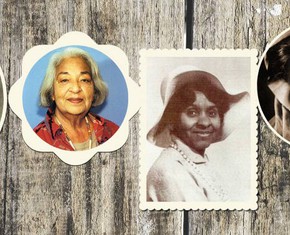The views expressed in our content reflect individual perspectives and do not represent the authoritative views of the Baha'i Faith.
The primary route from Harran to Canaan, the one Abraham most likely trod in his fresh exile, was nothing close to a straight line. The road began in southern Turkey, stretched into western Syria, and then meandered along a zigzagging course to the south through the heart of Lebanon and into Canaan / Israel. The primary reason for the indirect route was water. No savvy traveler—with or without accompanying animals—dared venture across arid distances without being certain he could replenish his supply of this precious liquid at predictable intervals.
The first fifty miles of the road moved across a series of springs and brooks where one could rest in the heat of midday or set up a camp at night. At the first major river—the Orontes—the route turned south, following the waterway. In northern Lebanon, near the origin of the Orontes, the route switched to the banks of a second river—the Litani.
(Eager hikers who can’t wait to lace up their boots and walk in Abraham’s footsteps may want to follow the route developed by Abraham’s Path (http://www.abrahampath.org). It covers more than three hundred (noncontiguous) miles of trail in Turkey, Jordan, the Palestinian Territories, and Israel.)
The final leg of the trip ran beside a fresh and beautiful stream nourished by snowmelt from the high, cold mountains that stretch across the border between Israel and Lebanon. When the stream flowed into the Sea of Galilee (a freshwater lake in spite of its name), travelers could continue around the lake to its southern end, where the water exited, and follow the River Jordan into the center of Canaan.
Because of the numerous twists, turns, and ups and downs of the route, the number of miles Abraham, Sarah, and Lot would cover before reaching Canaan was at least twice the four hundred point-to-point miles a ruler would measure. Accompanied by a meandering flock of sheep and goats, the pace would have been quite slow. On days when it was necessary to stop before sunset in order to erect a tent in which to sleep, even fewer miles would have passed beneath their feet. If they traveled more lightly, using pieces of silver as their means of exchange and riding at least part of the way in donkey-pulled carts or on an animal’s back, the rate of progress would have been better, but the speediest journey of all—taking only a week or two—would have been by water.
The harbor nearest Harran was a hundred and fifty miles away on the eastern shore of the Mediterranean. After reaching it, the travelers could buy passage on a boat sailing and/or rowing its way down the coast. There were dozens of small waterfront villages dotting the long coast where the boats could stop to wait out a storm, pick up fresh food, and load or unload cargo. Depending on the weather, the journey could be completed in a week or two.
There are several places where Abraham, Sarah, and Lot could have ended their trip and stepped from the boat onto the soil of the land that would be their new home. An obvious choice would have been the port of Acre, also known as Akka or Akko.
One of the oldest continuously inhabited cities in the world, Akka is also the place where, four thousand years after Abraham, Baha’u’llah and his family disembarked in 1868, in the last stop on Baha’u’llah’s successive banishments and imprisonments by the Ottoman Empire.
Although separated by nearly four thousand years, the parallels between the banishments suffered by Abraham and Baha’u’llah are striking. After first being exiled from Persia (modern-day Iran), Baha’u’llah lived for seven years in Baghdad, which lies well within the region once known as Ur of the Chaldees and is less than forty miles from Kutha, the town named by Jewish tradition as the birthplace of Abraham. Condemned as religious heretics, both Abraham and Baha’u’llah, as well as their wives, were expelled from Iraq and forced to move to Turkey. After settling in Turkey, Abraham and Baha’u’llah were again harassed for their beliefs. Both of them, still accompanied by faithful wives, left their homes again, destined to live out the rest of their years in Canaan/Palestine/Israel. Today, Baha’u’llah’s grave near Akka/Acre lies just a hundred miles away from the tomb of Abraham in Hebron.
These expulsions, banishments and homeless privations of the prophets of God prompted the writing of this mystical treatise from Abdu’l-Baha, who accompanied Baha’u’llah in his exiles and imprisonments. Here he reflects on the mysteries of those difficult journeys and their ultimate impact on the consciousness of humanity:
O ye homeless and wanderers in the Path of God! Prosperity, contentment, and freedom, however much desired and conducive to the gladness of the human heart, can in no wise compare with the trials of homelessness and adversity in the pathway of God; for such exile and banishment are blessed by the divine favour, and are surely followed by the mercy of Providence. The joy of tranquillity in one’s home, and the sweetness of freedom from all cares shall pass away, whilst the blessing of homelessness shall endure forever, and its far-reaching results shall be made manifest. – Abdu’l-Baha, Selections from the Writings of Abdu’l-Baha, pp. 280-281.
You May Also Like
Comments


















When & where did Baha'u'llah received any divine revelation from his God in order to reach the sacred place in Akka? it's only a mere coincidence that Baha'u'allah took his final breath on the Land of Akka, there is nothing special in that... It was related just to add chocolate sauce to it.